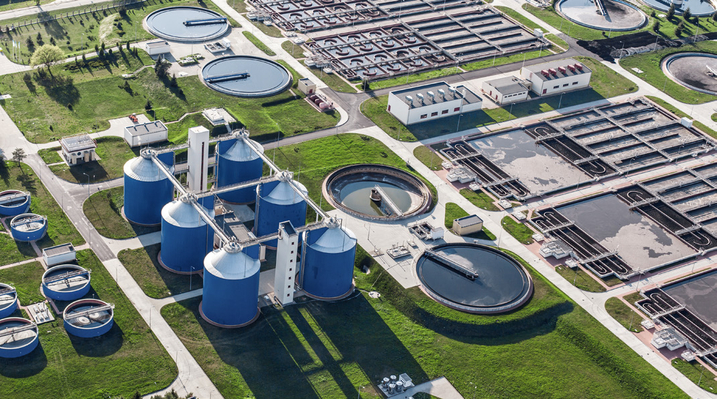poly aluminum chloride as a coagulant in water purification
Poly Aluminum Chloride, also known as Hydrated Aluminum Chloride (ACH) or Pack (PAC), has a special place as a polymeric and mineral coagulant in water treatment, wastewater treatment, agricultural and industrial effluents.
It is an inorganic coagulant and forms stable compounds with many organic and inorganic materials.
In the past, aluminum sulfate (alum) and chlorophyll were used as coagulants in water treatment to remove turbidity, but now poly aluminum chloride is a good alternative to these two coagulants in the market.
Poly aluminum chloride is known and used in countries such as the United States, China, Canada, France, the United Kingdom, and other countries as one of the most common coagulants in water treatment, wastewater, and industrial effluents.
Physical and chemical properties:
This product is offered for the treatment of drinking water, sewage, and industrial effluents in both liquid and solid (powder) forms. In general, it is produced in liquid form and can be used directly. Its solid form is produced in powder form due to the reduction of transportation costs. Poly aluminum chloride is solid (powder) with colors from white to yellow depending on different functions and with different grades. Its characteristic features include purity, molecular weight, and high repellency in refining.
Types of poly aluminum chloride:
For drinking water:
It is used in the water treatment process to settle colloidal suspended particles.
For wastewater treatment (industrial use):
- Industrial effluents of factories are among the most polluted waters that produce sludge, foam, and… pollution of the environment and increase the number of toxic substances in the water and cause the death of fish and living organisms. To treat these effluents and reduce their pollutants, poly aluminum chloride (industrial pack) is used, which causes clotting and coagulation of suspended solids in water and their heaviness and sedimentation.
Production process:
Industrial production of poly aluminum chloride is done by a chemical reaction between alumina hydrate powder with hydrochloric acid at a certain temperature and pressure. In this process, a certain amount of hydrochloric acid with a concentration of between 15 and 30% with a certain amount of aluminum hydroxide is mixed together with a mixer and the output liquid is transferred into the reactor to perform the reaction under certain pressure and temperature.
After the reaction, the output product is transferred to the dilution tanks, and the unreacted hydrated aluminum chloride is separated by filtration and sent into the fermentation tank, where after adding water with the chemical and mixture to adjust the required concentration, The final product is sent to storage tanks.

Applications and uses of poly aluminum chloride:
- Purification and ventilation of drinking and municipal water;
- Wastewater and effluent treatment of chemical, petroleum, and petrochemical plants;
- Water treatment of thermal power plants;
- Pool water purifier;
- Treatment of agricultural wastewater and effluents;
- Treatment, sedimentation of the river, lake, and groundwater resources.
Application of poly aluminum chloride in water treatment:
One of the most important features of poly aluminum chloride in its performance is the stable neutralization of colloidal particles, which creates suitable conditions for chemical coagulation of particles and instability of colloidal particles. Once the material provides the right conditions for the stabilization of the suspended particles, while the solution is slowly stirring, the time required for the particles to coagulate is provided. Finally, as water passes through the sedimentation pond, the solid particles clot and are separated by sedimentation. The performance range of poly aluminum chloride at pH is between 5 and 9 and the most suitable performance range is pH between 6.5 to 7.6 (neutral pH).

By forming hydroxyl ions and multivalent anionic polymers, this substance creates electrically inorganic molecules and macromolecules in water, resulting in the coagulation and flocculation of suspended particles.
Advantages of using poly aluminum chloride in water and wastewater treatment:
Poly aluminum chloride has been used in the past as an effective and efficient material for the treatment of municipal water, sewage, and industrial effluents. The structure of this product is composed of aluminum ions in the form of aluminum sulfate.
One of the effective reasons for using this compound in water purification is its availability and cheapness. Other benefits include the following:
- Increases the power to remove water turbidity;
- the residues of aluminum chloride;
- Sedimentation time is significantly reduced;
- Its use is 30 to 60% less than aluminum sulfate and cheaper;
- Reduces sludge removal costs;
- Does not affect the chemical properties of water;
- Other benefits of this substance include lowering the pH of the water.
Poly aluminum chloride (PAC) in the treatment of industrial and petroleum wastewater:
Other important applications of this compound in the industry include its ability to separate industrial and oil effluents. Today, petroleum wastewater has a great impact on environmental pollution. The presence of poly aluminum chloride in the treatment of industrial and oil wastewater and effluent through coagulation and flocculation plays an important role in removing these pollutants.


Leave a Reply